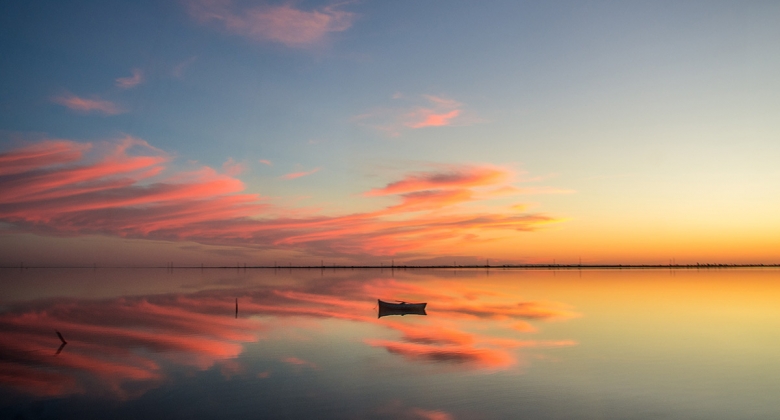
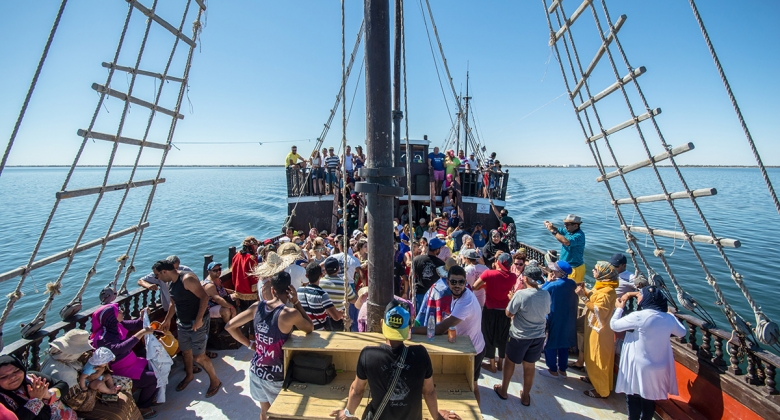
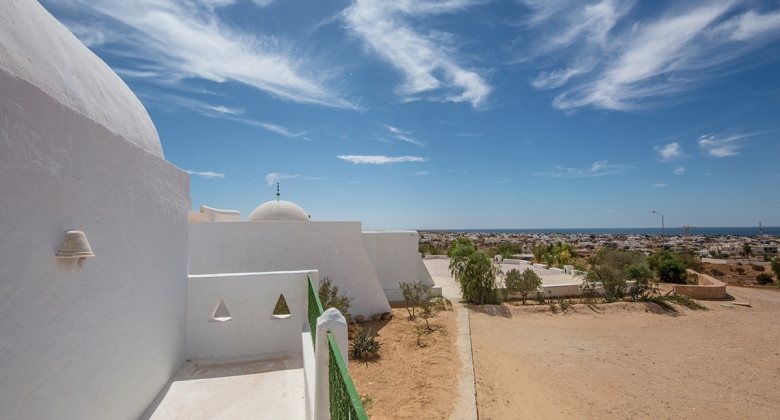
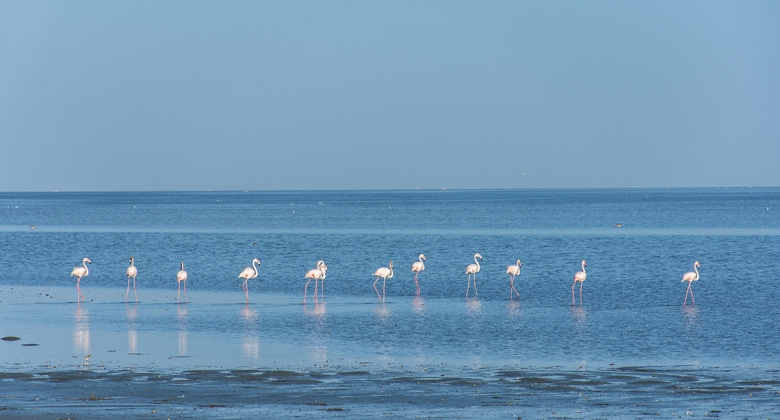
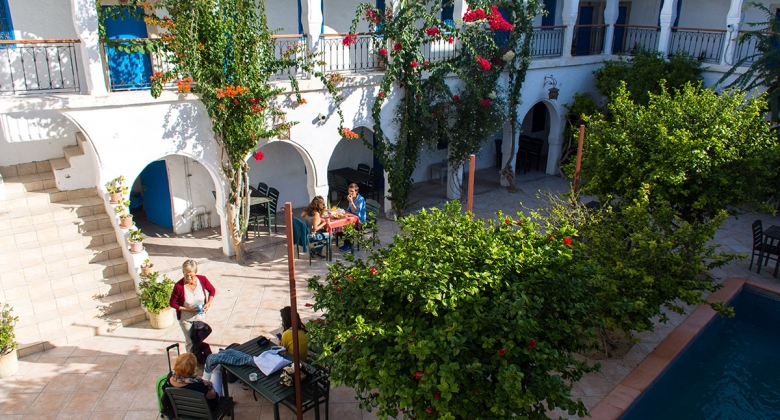
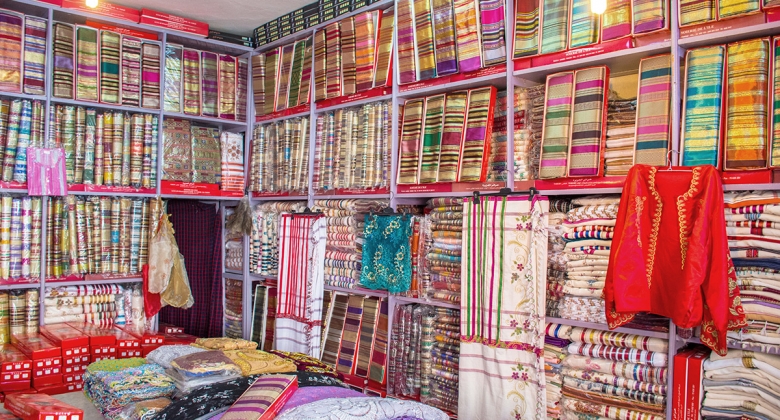
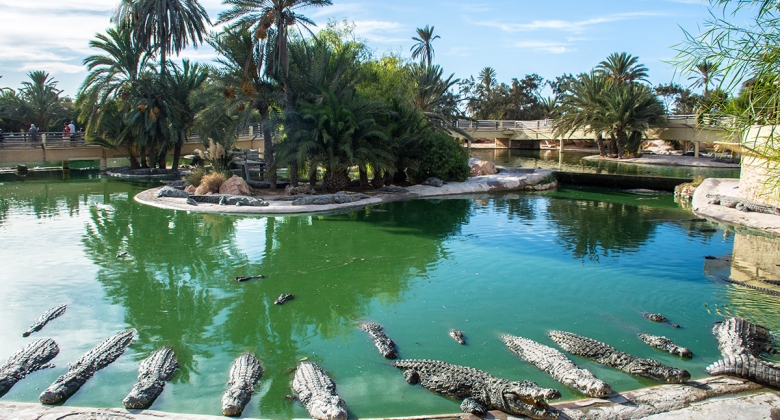
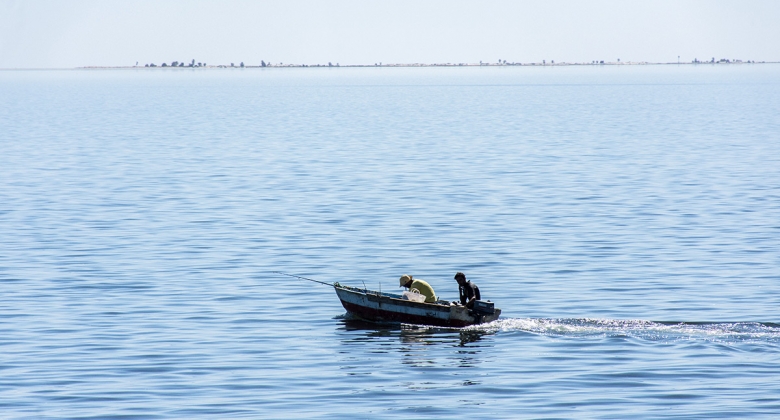
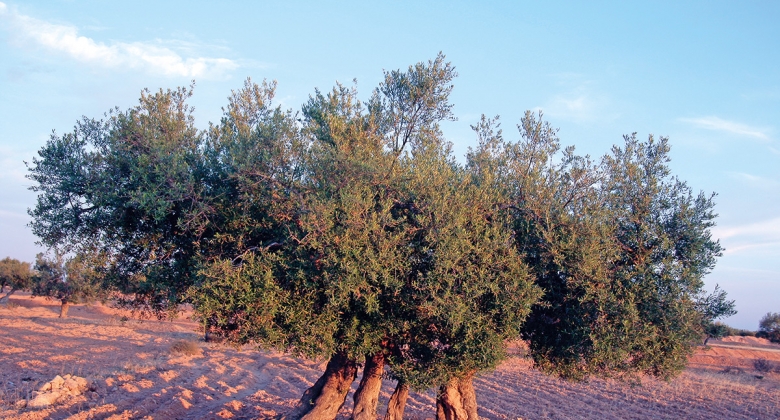
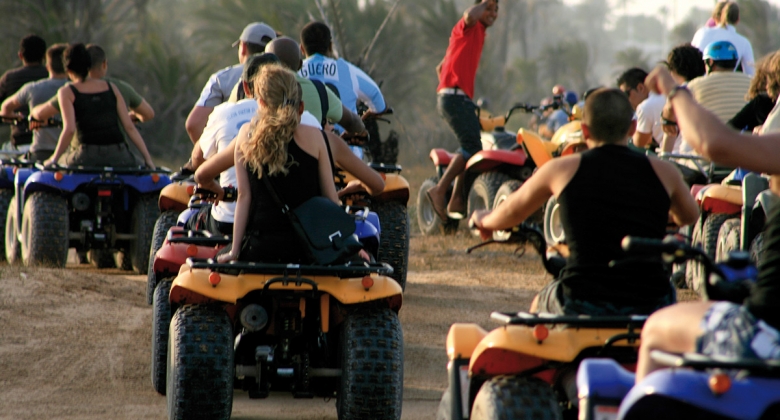
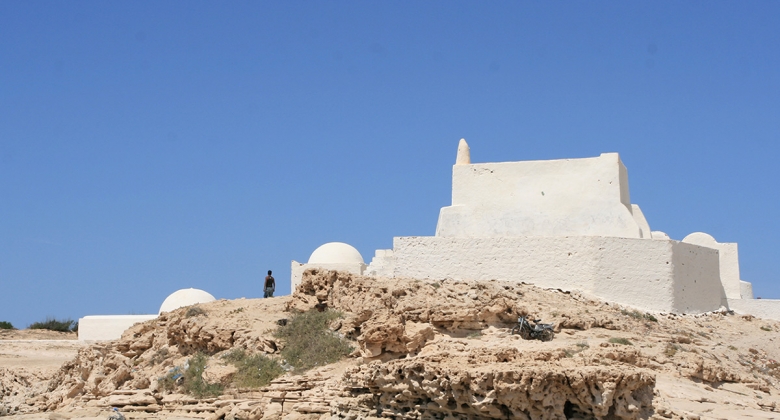
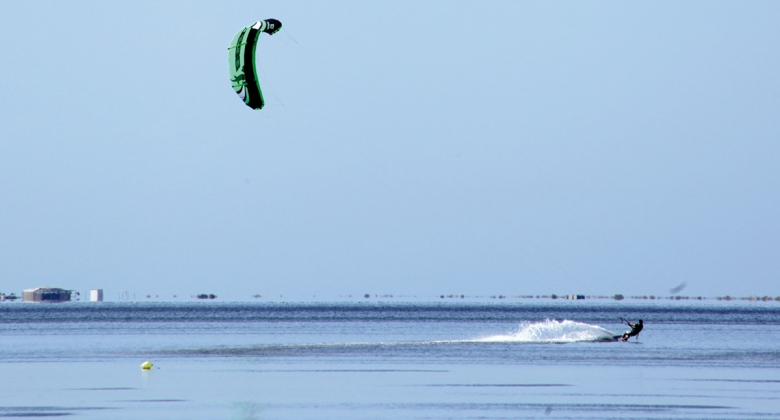
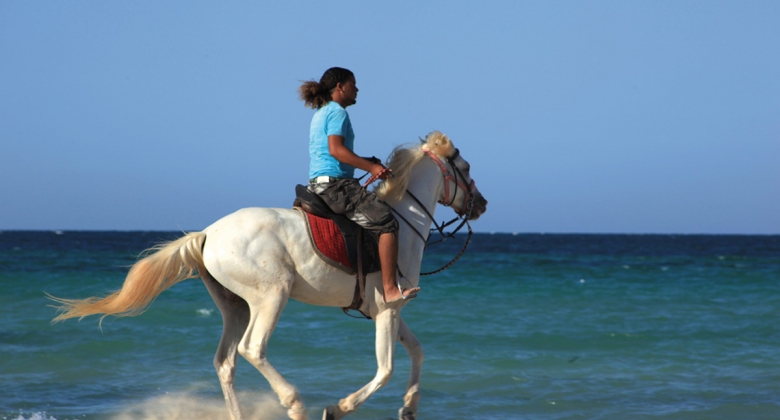
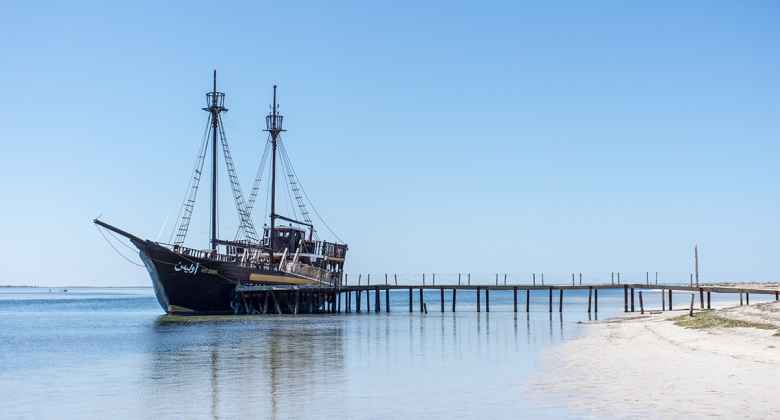
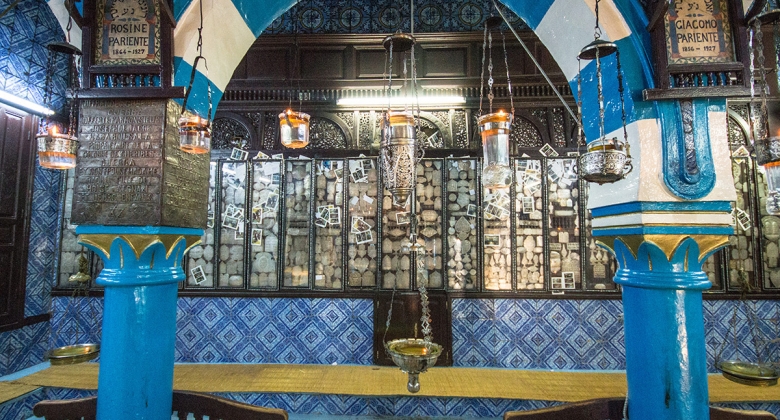
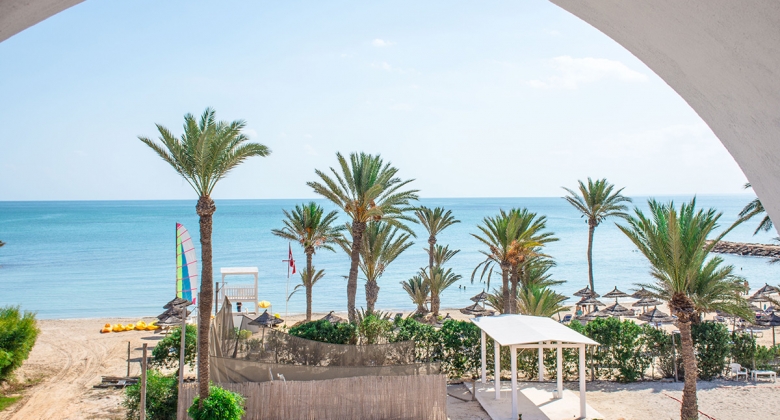
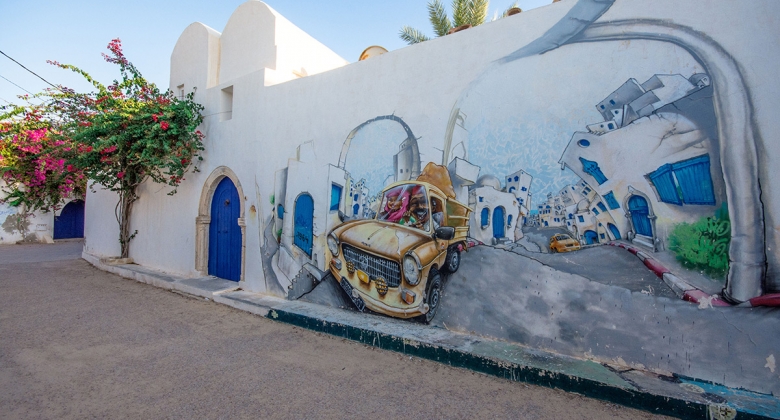
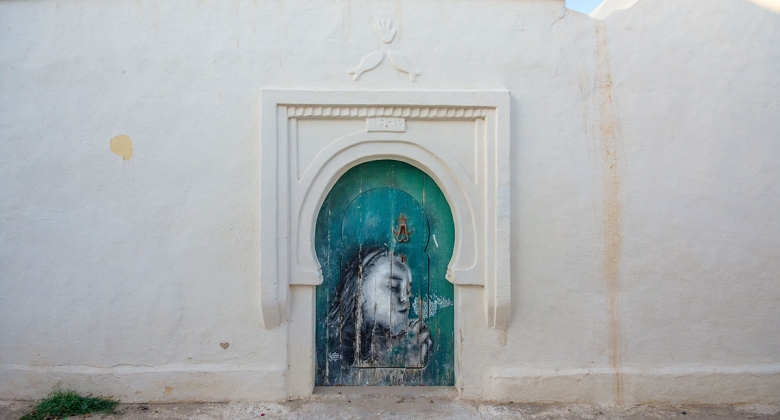
The great island of the Tunisian South and Zarzis, its neighbour on the mainland, are one of the most marvellous holiday destinations in the Mediterranean. Djerba is also a traditional land and a gateway to the nearby Sahara.
Are you a daydreamer? You will love Djerba for its fine sandy beaches fringed with palm trees, its seas in multiple shades of turquoise, its serene landscapes and its colourful sunsets.
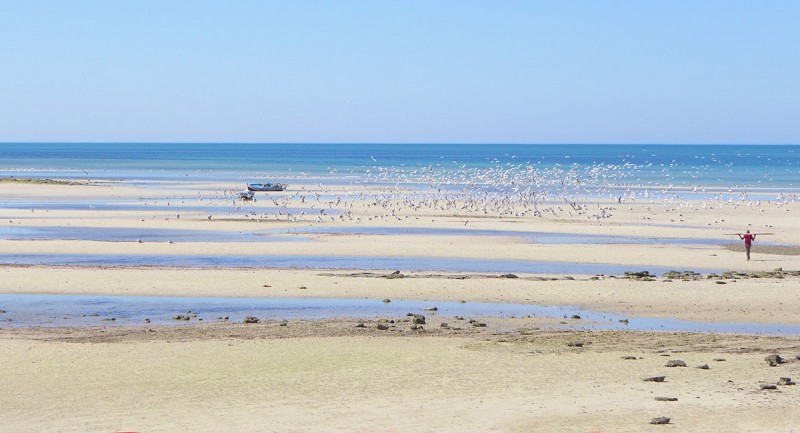
Take a dip on a beach far away from the hotels. See how the migratory birds gather. Gossip with the fishermen to learn their traditional ways… Or go on a pirate boat trip to take a swim on a beautiful wild beach.
Also on offer are numerous massages and treatments proposed by the many spas and thalassotherapy centres of Djerba and Zarzis. With its end-of-the-world atmosphere, Djerba is the ideal place to relax!
Do you think that holidays are made for moving around and having fun? You will have many holiday clubs to choose from and you can try multiple beach activities.
Aghir beach:
Choose your accommodation and book without intermediaries
For an exotic massage, a perfumed clay wrap in the hammam, or a complete thalassotherapy treatment program, Djerba and Zarzis have magnificent spas and thalassotherapy centers.
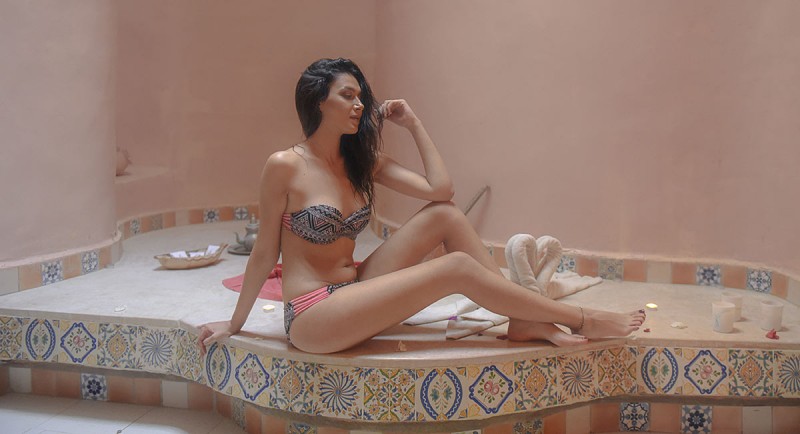
A must: go on a pirate boat trip to have lunch on the ‘Pink Flamingo Island’ and take a swim on this sandy peninsula in wonderfully pure water. And enjoy the lively atmosphere on board!
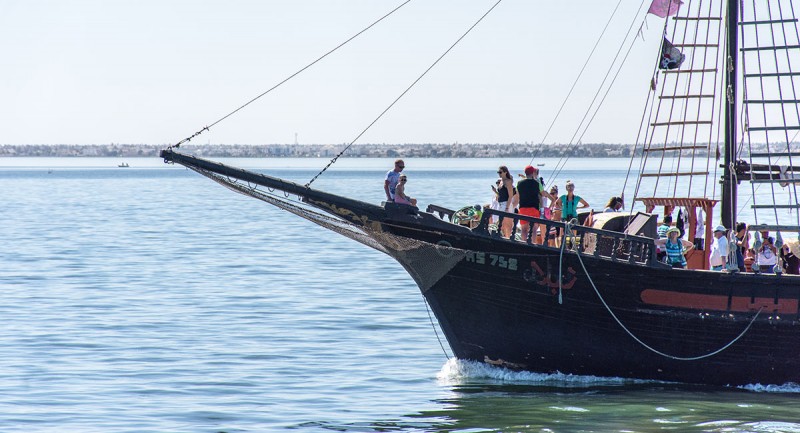
Explore sandy trails by bike. Admire the small countryside mosques.
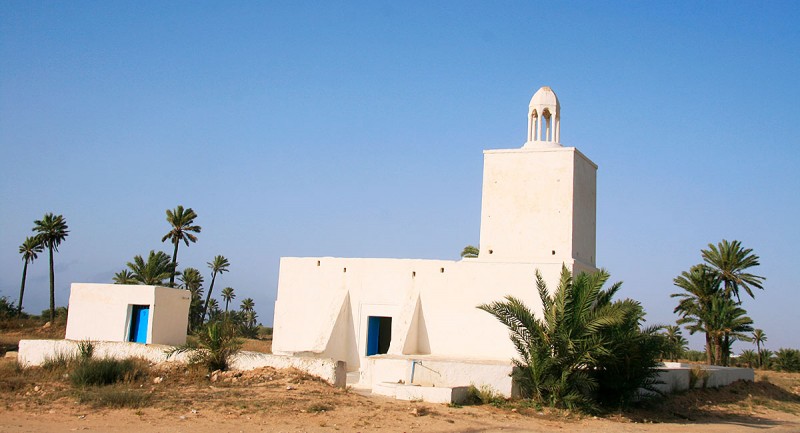
Other options: going out in the evening to restaurants and nightclubs, taking a trip out to sea on board a pirate ship, or along the lagoons riding a quad bike.
Did you know? You can also play golf in Djerba. Read more about golfing in Tunisia.
Finally, don’t forget that Djerba and Zarzis are your gateway to the Sahara. Berber villages, Ksour and sand dunes are a 4x4 ride away!
> CHOOSE YOUR ACCOMMODATION IN DJERBA OR ZARZIS.
Are you a street art fan? Take a stroll through Djerbahood, the village of Erriadh transformed by artists from all around the world… And also look for works of art scattered around the countryside. Read more about Djerbahood, the street art village.
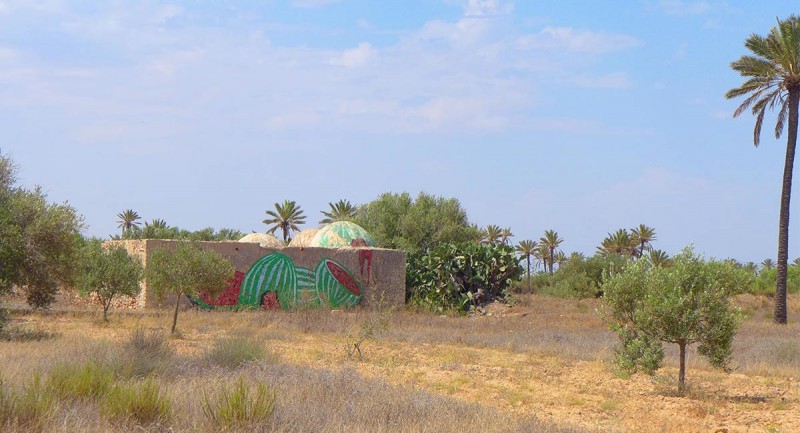
Buy fresh fish at the market in Houmt-Souk, the island’s main town. You can have it grilled and then taste it straight away in one of the small neighbouring restaurants!
Explore Djerba island on foot: a charming hike between old Menzels, small mosques and olive trees. Read: hiking in Djerba.
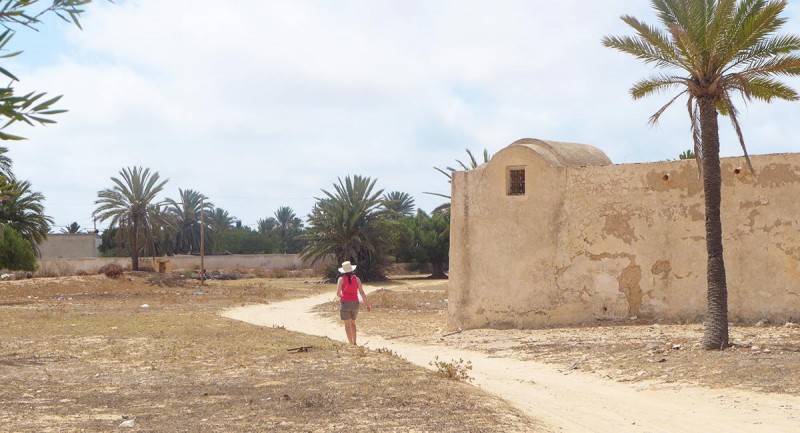
On a quad bike or buggy, ride along the sandy tracks in the palm groves, between the dunes or along the lagoons.
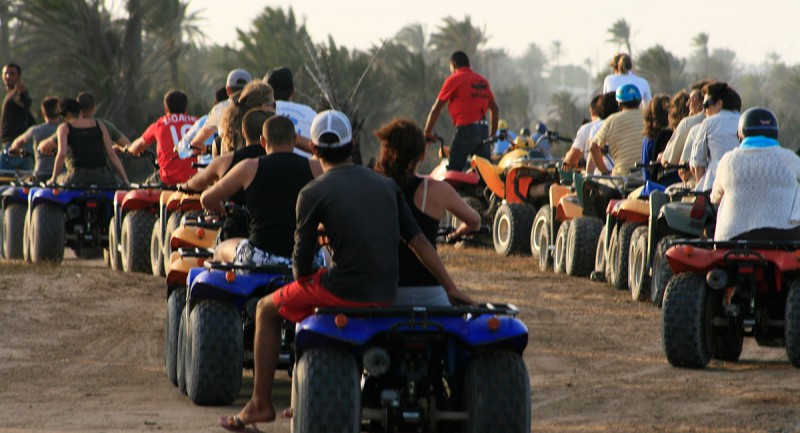
In Houmt-Souk, have a drink in the courtyard of an ancient Fondouk (caravanserai): the Youth Hostel or the hotel Arischa.
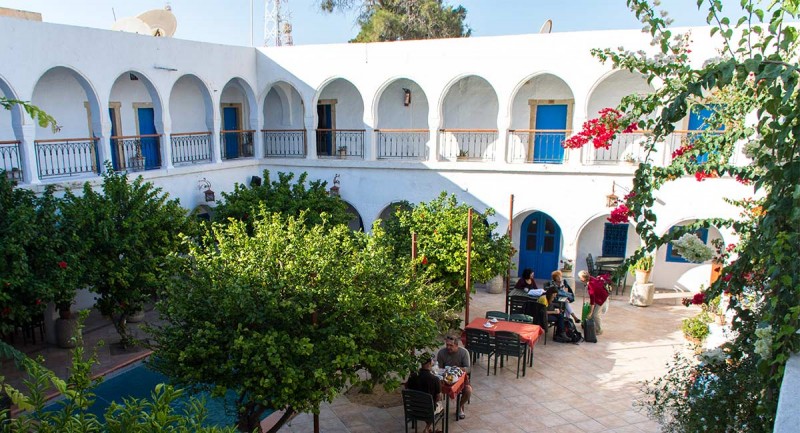
For a more muffled and jazzy atmosphere, choose the lounge-bar La Taverne just a stone’s throw from the beach of Sidi Mahrez.
Explore traditional weaving shops: woollen blankets, hand-woven bedspreads and shimmering fabrics will enchant you!
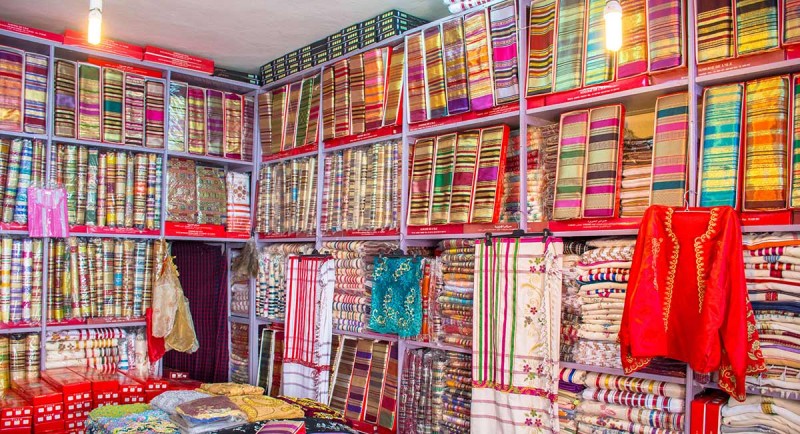
In the south of the island, visit the pottery workshops of Guellala. Some of them will offer you to try your hand at pottery, to visit to a clay quarry, or to taste the famous lamb ‘à la gargoulette’, a roast cooked in a clay pot.
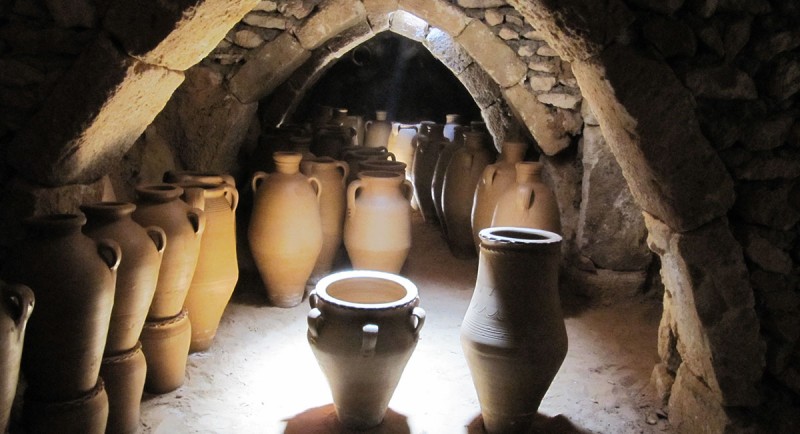
Visit a ‘houch’, the traditional house of Djerba. These all-white houses, consisting of vaulted rooms around a patio, are perfectly suited to the hot climate.
The Djerba Explore park includes the reconstruction of a ‘menzel’: the houch with all its outbuildings (well, weaving workshop, potter’s kiln).
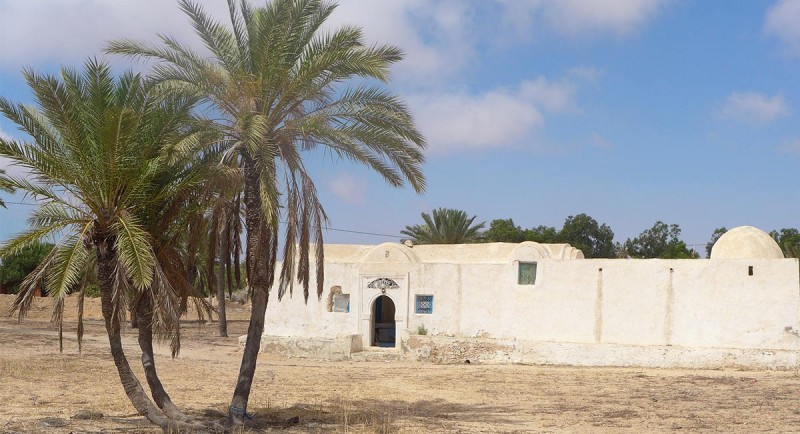
Attend the feeding of crocodiles at the Djerba Explore centre! This leisure park is home to a Nile crocodile farm. The reptiles are fed in front of visitors on Wednesdays, Fridays and Sundays at 5pm (on Facebook).
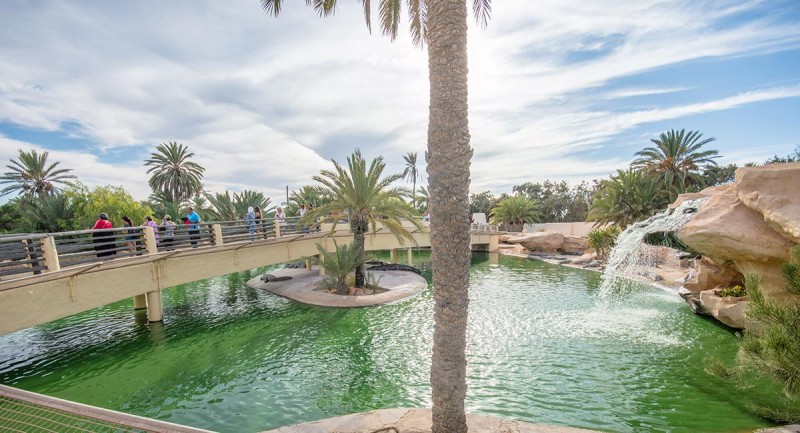
Play golf between the sea and the sand dunes! The Djerba Golf Course (27 holes) stretches at the foot of the palm trees in a typically Djerbian landscape. More information about the Djerba Golf Course.
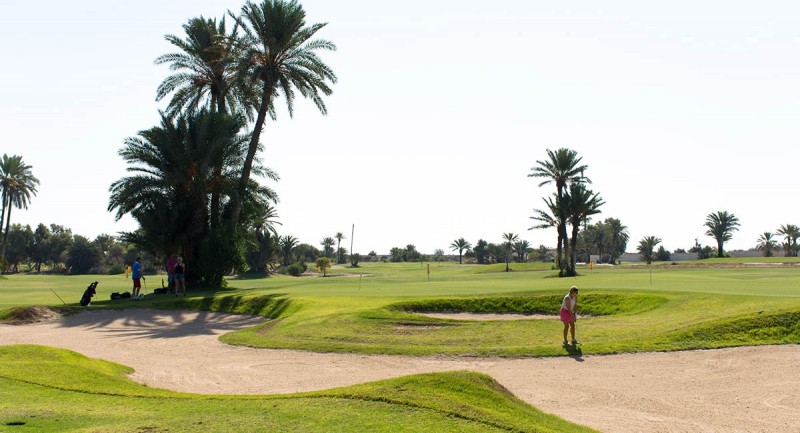
A thousand-year-old synagogue, original traditions, beautiful museums and even a colourful street art village: places of interest are plentiful.
The walls of this seaside fortress still ring with the battles that raged there, in the 16th century, between the Spanish and the Turkish corsairs led by the famous Dragut. Practical information.
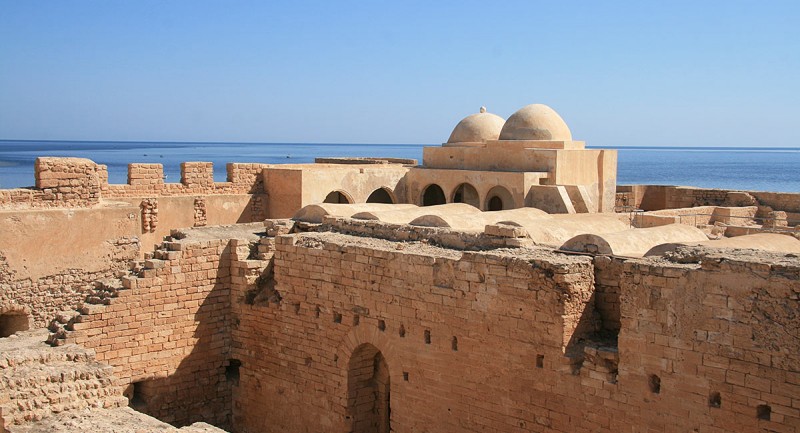
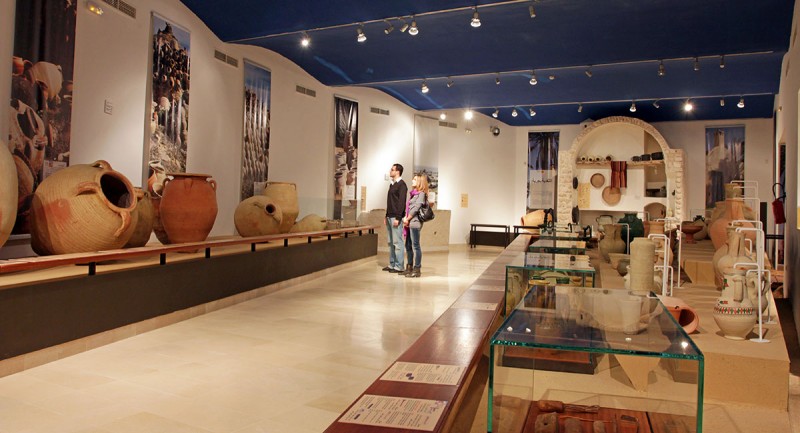
Found in Houmt-Souk, this modern museum showcase many aspects of Djerba’s unique heritage: agricultural techniques, the tradition of pottery, an extremely beautiful collection of costumes and jewellery… Practical information.
This centre brings together workshops of talented craftsmen as varied as traditional weaving loom or art pottery (on Facebook).
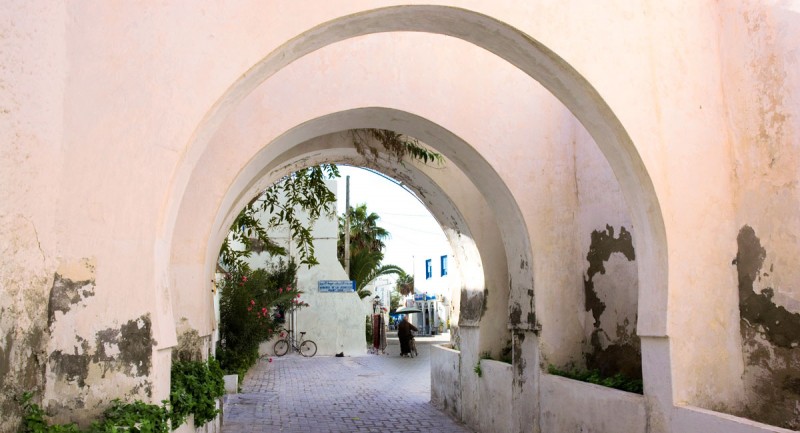
This small town is today the main locality of Djerba. In the past, it had many caravanserais, or fondouks: you can still see their beautiful white arcades, sometimes in ruins, sometimes converted into craft shops.
Also worth seeing: the souks, the silver jewellery shops, the covered market where fish is sold by auction, the church of Saint Joseph built in the past by the small Maltese community.
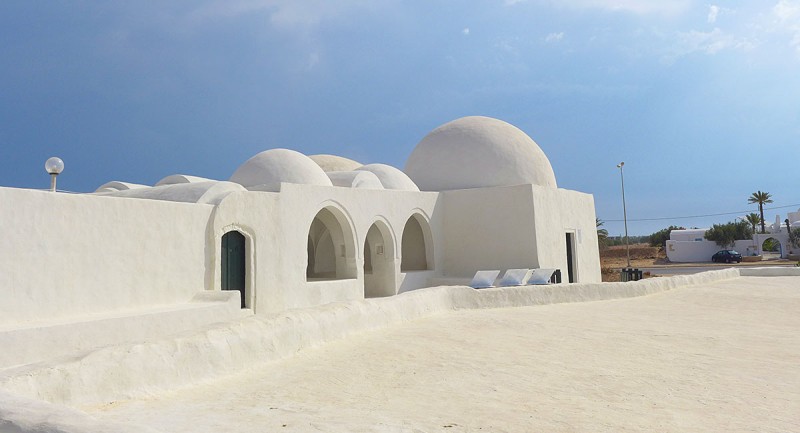
Fitted for visiting, this small countryside mosque is typical of Djerba.
Built in the 14th century, it was a community center including a school, defence devices in case of an invasion, a mill and a bread oven for nearby farmers…
Its sober architecture is astonishingly beautiful.
Open for visits in the morning from 7 to 12. Read more about the Fadhloun mosque.
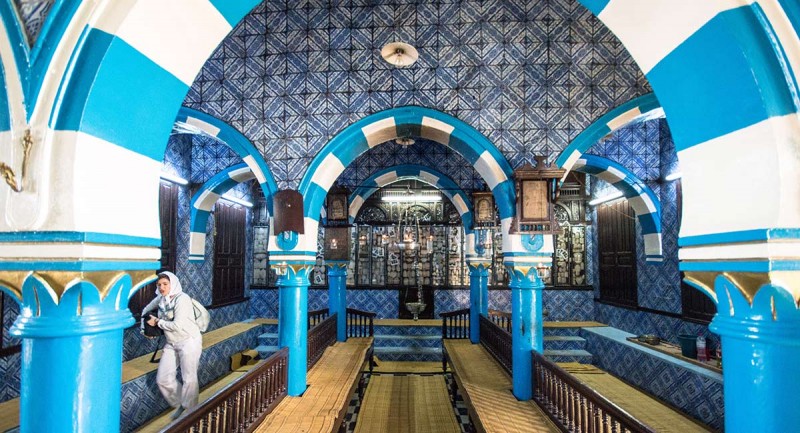
Jews and Muslims have peacefully cohabitated for centuries on the island of Djerba.
Visit this pretty synagogue decorated with ceramic tiles in shades of blue. It is said to have been founded in the 6th century BC, evidence of a very longstanding Jewish presence on this island.
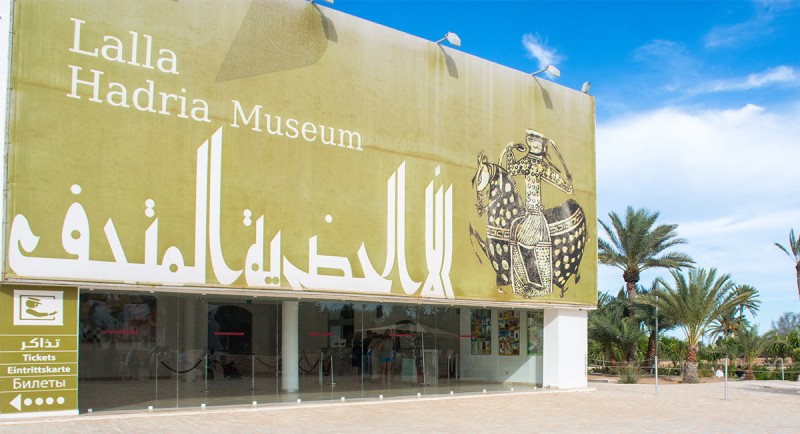
A large farm of Nile crocodiles is the other attraction of the park: feedings are particularly impressive!
You can also visit one of Djerba’s traditional dwellings, a potter’s workshop, an oil press… all faithfully reconstructed (on Facebook).
Choose your accommodation and book without intermediaries
See also the Djerbahood website.
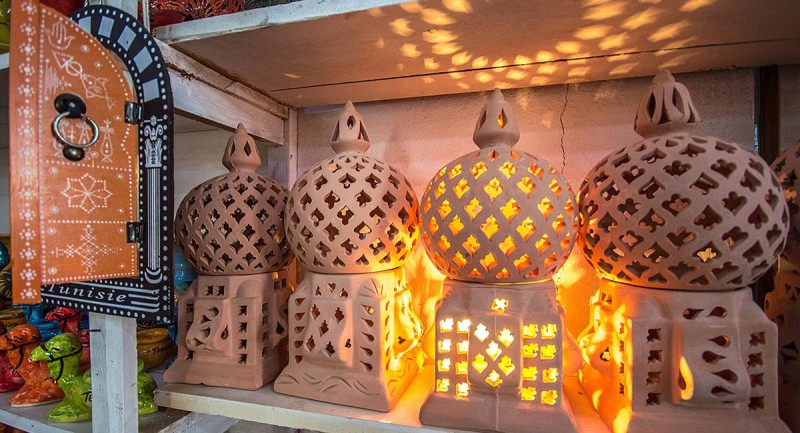
Located in the south of the island, Guellala is the village of the potters of Djerba. Since time immemorial, they have worked with clay in the coolness of their underground workshops. Jars, gargoyles, vases and trinkets made of raw clay are their speciality.
Also worth seeing: the Guellala Heritage Museum presents amusing reconstructions of daily life.
![]() Connected to the mainland by a ferry and by an ancient road (the “Chaussée romaine”), Djerba is close to the first sites of the Sahara and the extraordinary landscapes of the Dahar, the “desert of stone”.
Connected to the mainland by a ferry and by an ancient road (the “Chaussée romaine”), Djerba is close to the first sites of the Sahara and the extraordinary landscapes of the Dahar, the “desert of stone”.
The medina of Gabes and its maritime oasis – the only one in the Mediterranean – are worth a detour.
This site is one of the most stunning in Tunisia: craters dug into the rocky hillside hide true subterranean homes.
One of them – now the Sidi Driss hotel – was used as a set in an episode of Star Wars. Read more: Star Wars in Tunisia, to the birthplace of the Skywalkers.
Visit other Berber villages like Tamezret and Toujane in the surrounding area.
More about Matmata and its subterranean homes.
Around Medenine and Tataouine stretch majestic landscapes of arid mountains and rocky spurs.
Unusual structures arise out of this “desert of stone”: the Ksour, collective granaries formed of superimposed chambers, and Berber villages dug into mountainside. Read more about the Ksour of the Tunisian South.
More about the Tunisian South.